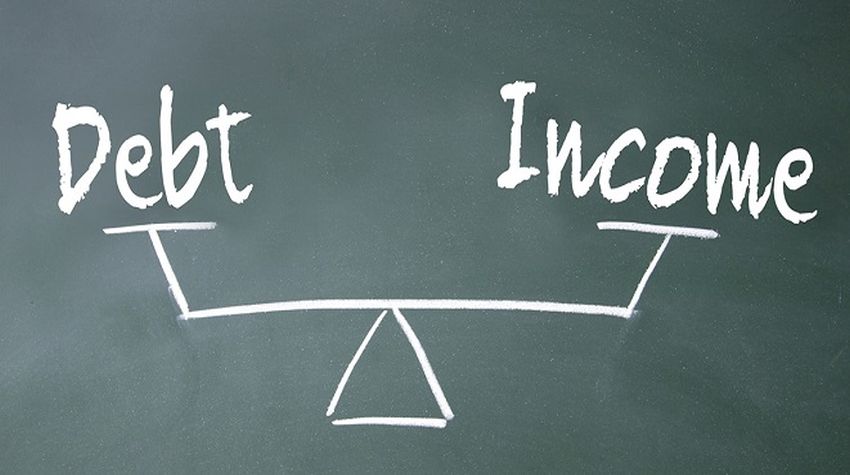With the pandemic keeping more of us at home, for more hours of the day, about a fifth of homeowners have their eye on a renovation in the near future. The big question for many is: What’s the best way to pay for it?
Since the COVID-19 pandemic entered our lives, Canadians have been spending a lot more time at home—and in many cases, it’s inspired both indoor and outdoor renovation projects. New consumer research suggests 23% of Canadians have completed a renovation in the past year and an additional 21% are considering a renovation in the near future. The shift to backyard visits may have made a new deck or freshly landscaped patio more appealing, and in some cases, remote work or virtual school has highlighted the need for a space that functions as a home office. Others are noticing overdue cosmetic updates or are using this time to complete repairs around the house.
While these home renovations are often necessary, and some are even exciting, most Canadians don’t have the means to pay for these projects outright. 25% of Canadians have saved money during the pandemic as a result of reduced spending on dining out, entertainment, clothing and commuting costs. Families in this fortunate position are using newfound space in their budget to create emergency savings, invest or pay down debt or to help fund a large purchase. Even with these savings in hand, however, Canadians will need to borrow at least part of the cost of their planned reno projects. The big questions for many are: What are the options available? And which is the best for them?
Can you afford to finance your reno?
Generally speaking, it’s okay to borrow money for a renovation as long as you can adequately service the debt it creates. This means understanding how the interest rate and repayment structure of your loan will impact your finances. What will the monthly payment be on a $30,000 loan or a $50,000 line of credit, for example, and can you afford to add that to your budget?
With so many borrowing options available from your bank and other lenders, if you have a steady income, you’ll likely have access to some form of credit. However, that doesn’t necessarily mean you should go for it. If you don’t qualify for a secured loan or line of credit, you probably shouldn’t do the renovation. Getting turned down by a lender reflects your credit history, debt, income, and other factors—including the size and affordability of your project. You may want to consider scaling back the renovation or holding off until you’ve saved up a larger proportion of the cost.
Home Equity Line of Credit (HELOC)
A home equity line of credit, commonly referred to as a HELOC, is a revolving line of credit that is secured by the equity in your home. Nearly all banks and credit unions offer this type of lending, and because a HELOC is secured to your home, interest rates are significantly lower when compared to unsecured loans and lines of credit.
Homeowners can typically borrow up to 80% of the appraised value of their home minus the amount owing on their mortgage. For example, if your house is worth $750,000 and you owe $300,00 on your mortgage, you would be able to borrow up to $300,000 on a HELOC. Interest payments are structured, but otherwise, the homeowner is able to move money in and out of the line as they please. Most major financial institutions offer interest rates based on the lender’s prime rate (for example, prime +1%).
Once you’re approved, the funds can be used for anything you choose: a renovation, a new car, unexpected expenses. Many homeowners opt to set up a HELOC with their lender just to have credit available immediately if needed. However, this type of credit can be dangerous if you’re prone to overspending or bad at setting boundaries. As you make payments back to the line, that credit becomes available again, allowing you to re-borrow funds. If you are only making the minimum payment each month—usually just the interest owing on the amount you’re currently using—while you continue to draw additional funds from the line of credit, your debt can skyrocket. It’s best to use a HELOC for planned expenses only and avoid using it for discretionary spending or filling gaps in your monthly budget.
If you’re worried you may overspend on a HELOC, ask your lender to set a limit you’re comfortable with. Just because you get approved for the maximum amount doesn’t mean you have to take it. So, if you only need half of what they’re offering, ask them to meet you there.
Refinancing your Mortgage
When you refinance a mortgage, you’re adding to the amount of money you borrowed from a bank or other lender to purchase your home. This new amount is then rolled into balance on your mortgage. This means you won’t have a separate loan or line of credit payment to deal with—it’s all covered by your mortgage payment. Mortgage refinancing is more structured than a HELOC, this is an attractive option for many homeowners and often has the lowest possible interest rate, because it’s a first mortgage that is secured by the equity in your home.
Refinancing a mortgage is a great option for those with a tendency to spend, as there’s less need for discipline, you get a lump sum loan, to cover the cost of your renovation and the repayment is fixed. You can’t really abuse that money and you can’t get extra.
If you add to your mortgage principal, you will owe more and, subsequently, you could have a higher monthly payment. However, if you add to the loan while locking into a lower rate, you may actually end up with a lower monthly payment (yes, even if you’ve borrowed more money). For example, if you originally owed $450,000 on your mortgage at 4% interest with an amortization of 25 years, your monthly payment would have been $2,375. If you added a $100,000 loan at the time of your mortgage renewal and locked into a lower rate of 1.8%, you’d owe $100,000 more but have a monthly payment of $2,278—slightly lower than your original monthly mortgage payment.
Unsecured Personal Loan or Line of Credit
A personal loan is a lump sum that you’ll repay with interest on a set schedule. A personal line of credit operates like a HELOC, with a limit you will continually regain as you repay the funds borrowed, but at a higher interest rate because it’s not secured to your home. The interest rates on personal loans and personal lines of credit are typically similar.
While this type of credit may come in handy in an emergency, it isn’t ideal for planned renovation expenses. Not only do these options come with much higher interest rates than secured forms of credit, but you will also likely have access to less money, which limits what you can do.
However, if you find yourself in a bind, an unsecured personal loan or line of credit with a reputable financial institution can be helpful. If you can pay it off quickly, it’s better than using a credit card. But it’s not inexpensive or ideal for the average person. While the interest rate on a HELOC may be the lender’s prime rate + 1%, interest on a personal loan might be anywhere from 6% to 12% or more, depending on the lender and terms, as well as your personal credit rating and existing debt load. The interest rate on a standard credit card will likely be 19% or higher.
The bottom line? In an emergency, a personal loan can be a lifesaver, but it isn’t ideal for most homeowners and should not be used for discretionary spending.
What else should you be thinking about when borrowing funds for a home renovation?
A renovation can cost a lot of money, but it typically adds value to your home—something to consider if you have plans to move in the near future. If you’re borrowing money on a HELOC or other form of credit to renovate, your home’s value should go up, if you’re selling, this could be a great investment. But if you’re not selling, you still have to pay it back. Real estate value aside, a home renovation can bring a lot of personal satisfaction and improve your quality of life.

